The editorial staff recently received a test copy of Metal Gear Solid V: Ground Zeroes, a game we’d been waiting to try out. There was a lot of speculation about where the Meal Gear Solid series was headed, but very little was actually shown to the public. At the 2013 Electronic Entertainment Expo (E3) in Los Angeles, we finally got a glimpse. The trade fair, the largest in the world for the video games industry, featured a presentation showing animated scenes from the title for the very first time. Everyone knows Ground Zeroes is meant to fill the gaps between MGS: Peace Walker and MGS: The Phantom Pain. More than that, though, it’s a first glimpse at what might be in store for us when MGS: The Phantom Pain is released next year. One thing that can be said at the outset, though, is that the developers at Kojima Productions are not just running off the steam of previous titles in the series. The Japanese development studio is taking some new approaches in order to deliver a title intended to be a hit in its own right. This review should demonstrate just how likely those prospects are, and whether it’s worth purchasing this prologue title.
Gameplay
Our trip to the small island south of Cuba is anything but idyllic. The rain is coming down in sheets as the wind whips against our protagonist’s face, and the pitch black night underscores the message that we’re not welcome here. But this mission can’t wait, and so, despite everything against us, we head for the military installation to rescue the two hostages. Why we’re doing this has yet to be explained. Along with the excellent weather effects, the new game environment is really eye-catching, and not just because there’s clearly more detail than in earlier titles in the series. For the fifth game in the Metal Gear Solid series, Hideo Kojima and his team of designers boast an open-world environment. The time of enclosed linear levels separated by load screens is finally over. The game map is now wide open and freely accessible, requiring us to be careful about where we go and how we get there. If you just bolt ahead, sooner or later you’re going to run into one of the many guards roaming the area, or simply get lost. In such a hostile environment, the operation can quickly go wrong, and you might find yourself running a gauntlet of enemies.
Up on a high plateau we decide to do a bit of recon and use our binoculars to survey our surroundings. The binoculars allow us to not only see things at a distance, but also to mark enemies, vehicle, and buildings. These markers, also displayed on our iDroid, remain in place even when obscured by obstacles like buildings and fences. The iDroid is a useful device used to view the map and read up on mission objectives, among other things.
We can also use our radio, called the “Codec”, to receive information about our objectives. It’s been made a whole lot easier to use that before, and doesn’t break up the flow of the game, either. By pressing L1 we can automatically connect and get all the information we need to know without opening up another screen. This would leave us helpless, as Metal Gear Solid: Ground Zeroes doesn’t allow us to pause at any time; neither when selecting weapons nor when looking at the map.
Essentially, everything is designed to allow for fluid gameplay. Things controlled using menus in previous titles, such as weapon selection, the Codec, or the binoculars, are now selected and operated with the help of quick select buttons. One exception is the iDroid – when using it, we are completely defenseless.
After we’ve marked all the guards and planned the correct route, we come across our next problem – the searchlight coming from a guard tower is scanning the exact area we need to cross in order to infiltrate the base. We could just make a run for it, but if we don’t want the whole base on our back, we’re going to have to proceed with caution. So we creep through the underbrush, clamber up rock faces, or hide under any cover we can find to escape the gaze of our pursuers. Despite his age, we have never seen Snake so agile.
Sometimes a guard may indeed get in our way, and no amount of sneaking will get us past him. Then it’s time for action, and we can press a button to engage in close-quarters combat without attracting the attention of other hostiles. We’ve got a lot of options to choose from besides just silently taking the target out. Gathering information is the best way to avoid any unpleasant surprises, so we ask our new, stunned friend a few questions. Our little interrogation session yields information such as the location of the weapons depot or security cameras, or even information pertaining our mission objectives. These details are immediately marked on our map. Not every piece of information is of great value, though, so we don’t bother shaking down each one of the bad guys. And if you don’t want to get your fingers dirty, you can also use a directional microphone to listen in on enemy conversations.
With every patrol or vehicle we come across, there’s always that one guard we notice too late. This is where we’d expect all the alarms and signals to go off, complete with a blue exclamation point, but that’s not what happens. A new feature called “Reflex Mode” cuts in, shifting us into slow motion. Boldly, we reach for our weapon, and one well-placed shot later the situation’s back under control, without setting off the alarm.
At first, many fans were afraid this encroachment into the game dynamics could have negative consequences, as it might make the game too easy. Boy, were they wrong – if you’re not already stalking the target to begin with, it’s almost impossible to react quickly enough. Timing is key here, as the slow motion mode won’t last more than a few seconds. There’s usually never enough time to get your bearings if you have to, so if you just randomly bump into an enemy, there’s almost no way to react in time.
On the other hand, if you’ve already spent a minute sneaking up to the target and it looks like you’re about to blow it at the last minute, there’s still a chance to salvage the situation. In this way, the game avoids directly punishing players for making a small mistake. Then again, this new feature can be turned of at any time, so Metal Gear veterans can breathe easy. Shutting off the feature increases the game’s difficulty and gives it an even more realistic feel.
But then there’s the mediocre AI. Granted, AI guards will leave their patrols to check out anything suspicious, but unfortunately they’re terribly easy to outsmart. Even when you set off an alarm, hiding behind a rock or a crate is usually enough to get you out of trouble. It’s like the game’s creators thought the sheer number of enemies would make up for this flaw. But though it pains me to say it, I’ve got to be clear that the enemy AI is not of the same quality as the in-game environment.
In MGS: Ground Zeroes, the map is relatively small and it doesn’t make a whole lot of sense to use vehicles; nevertheless, we can still use jeeps, trucks, and other vehicles in this prologue title. You can to get into any vehicle by pressing a button – apparently, the key always works. The first few moments of driving are kind of a let-down, though – nothing like driving in Grand Theft Auto or racing games á la Need for Speed. It feels like you’re on tracks, and there’s no sense of agility whatsoever. This significantly reduces the fun factor, but it gets the job done. During the mission you can put rescued hostages in the back of the Jeep and slip away unseen without having to drag them around for minutes at a time. Everything seems to indicate that Kojima has more tricks up their sleeve as far as vehicles are concerned; maybe a car chase or a boss battle? We won’t know until the beginning of 2015 when Metal Gear Solid V: The Phantom Pain comes out.
The phrase “enemy boss” is now almost a byword where Metal Gear is concerned. The series is distinguished by bizarre characters and boss battles that can often be really tricky. Unfortunately, Ground Zeroes doesn’t really follow in this vein. In the opening sequence you can briefly see “Skull Face”, a person with a rather unsightly face, as the name implies. The connection he has to Big Boss or Mother Base, or what happened between MGS: Peace Walker and MGS: The Phantom Pain is something you’ll only find out after completing the 90-minute campaign.
After you finish the main storyline, there are five more missions available, each of which will take you back to the island. The time of day and the weather conditions are as various as the tasks you have to perform. One time they’ll have you taking out snipers without attracting much attention; other times you might be collecting information. This makes the game last longer, but it still makes you wonder why these side objectives are not part of the main mission.
Graphics & Sound
Textures are sharp and well defined, animations are excellent, and lighting effects are realistically implemented. Soft and slack surfaces like rain ponchos and tents flap realistically in the wind, and weather effects are well done. Despite being able to see very far into the distance and a huge amount of detail, the frame rate remains constant, and during testing it never broke down.
The game looks very good, there’s no question about that. But unfortunately, the in-game graphics don’t really hold up to the expectations created by the rendered sequence in the first few minutes of the game. Where are the water effects that were so realistically depicted on surfaces? There are a lot of questions like this piling up at the moment. The developers really didn’t do themselves a favor with the intro.
So what system should you play it on? If you’re able to, get one of the next-gen consoles. The PlayStation 4 is slightly ahead in this regard, as it’s the only one that offering 1080p resolution and it’s got the sharpest textures compared to its competitors.
As far as sound is concerned, there is nothing to complain about, as is typical for the series. Harry Gregson-Williams has already demonstrated his impressive abilities in other Metal Gear Solid titles. So it’s no wonder that we’re once again dealing with a first-class soundtrack that perfectly captures the game’s emotional moments. Kiefer Sutherland does an outstanding job as the voice of Big Boss.











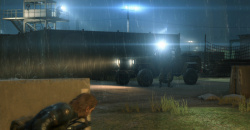

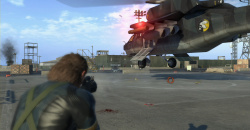
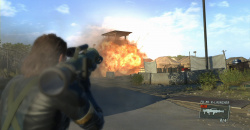
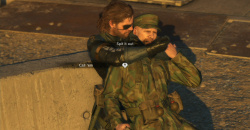
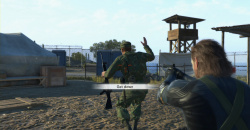
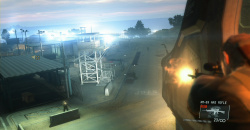
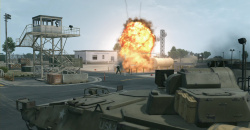
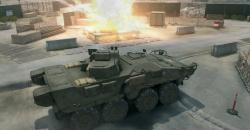

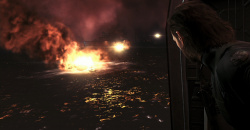
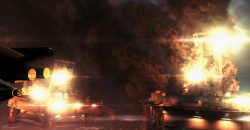
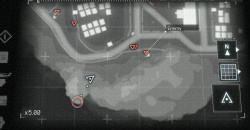
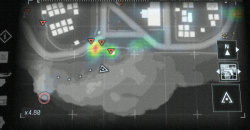
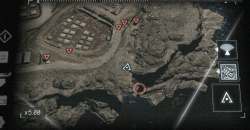
it's cool
pls pls pls the key!! T.T